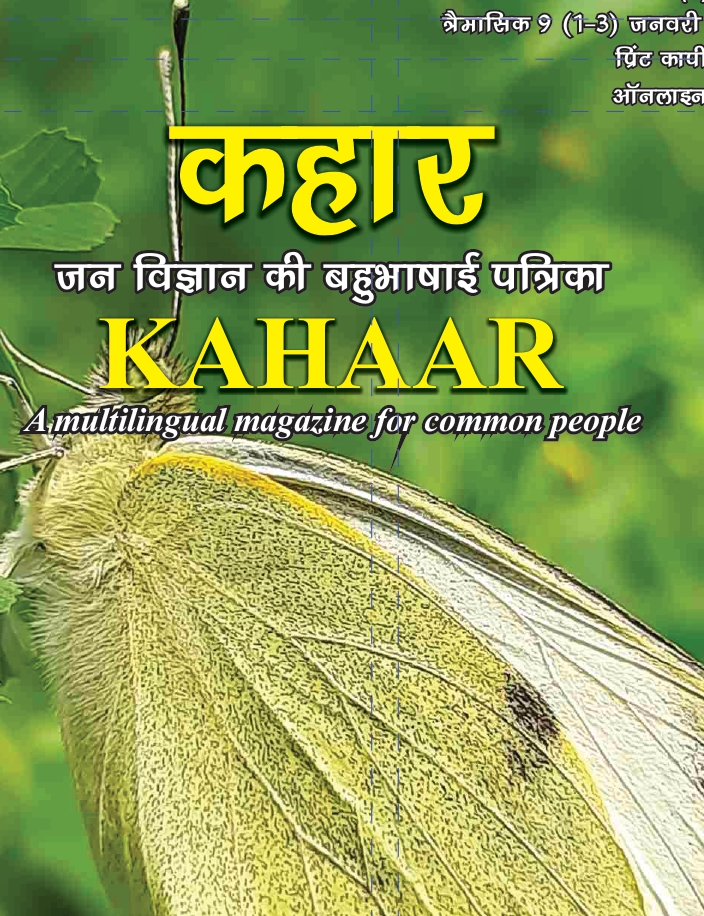The year 2022 has arrived in the calendar. Congratulations. It is time to seek new hope and gear up afresh to solve entrenched challenges.
At every new stage, we want to stop and look at the past, and if we think consciously, then we can understand that what we had thought and expected in the previous phase, what happened and what could not happen? Our minds, our paths, and our relationships are connected and to which extent broken to which extend. How much we were able to walk on our chosen paths towards our own decided destination and where we had to deviate from those paths due to many economic, social and cultural problems or not being able to solve the problems.
Last year went in the name of the global pandemic Corona and the whole world was engrossed in the ups and downs of its dangers and solutions. Different regions of India faced different problems and successes with different economic, social and cultural scenarios, health facilities and health infrastructure. Some people, societies, and governments have managed epidemics and human agglomerations better, and some poorly. The claims of good order, good management and treatment continued with discussions of maladministration, corruption, mismanagement and deaths. After the first and second rounds of the Corona period, now the third round has also come. Now it seems that our body has slowly started cultivating this unbridled virus in its biological system.
Experts’ assessments have started coming, that the constituents of Corona will now automatically start weakening and the conditions will start getting better. People around the world will learn to live with Corona just like many adversities. Hopefully, people’s travels, celebrations, conferences, industries will all start again in 2022 and people will look a little more familiar with the removal of masks from their faces.
After seven years of successful publications of ‘Kahaar’ magazine in online and print copies, we had decided last year that now it should be published online only. With the advent of ‘Bachpan Creations’, expectations of better management of online distribution and marketing were raised. We are satisfied that even in this Corona era, we were able to publish the magazine smoothly and the enthusiasm of our writers, readers, editorial and production team remained. We are not able to get in touch with the readers, so their participation is not yet known.
May these eight years of ‘Kahaar’ be years of many experiments and innovations for us. We have continuously enriched it with the shared learnings of our discussions and experiences. Keep adding some new readers, writers, editors and managers. Some companions also separated from this journey due to corona infection, increasing age or other reasons. It is a natural cycle. When some leave, only then space is made for new people. From this year, a new energetic editor Dr. Madhu Bhardwaj has joined ‘Kahaar’ team. We welcome that for its publication and social media management and support, two more young partners Dr. Rajesh Bajpai and Krishnanand Singh are becoming part of its team from this year.
Recently Professor H.S. Srivastava Foundation has started its new research and development center dedicated to rural development and environmental management, and we have selected some villages in different areas for our study and its development. We would like to focus a few pages of the magazine on our efforts and influences from this year. There is also a plan to publish an annual issue of selected long-term articles and materials from Kahaar in print copy. Hope you will continue to give your cooperation in all these endeavors.
The development of villages is a missed path of the link of development in the Indian scenario. Leaving aside the pre-independence of the country, many efforts, plans and structures of independent India could not give an effective direction to the development of the villages. Villages did not get good roads, good nutrition, good communication network, good schools and colleges, health infrastructure and respectable employment generating economy. After the implementation of Panchayati Raj, the kind of rural development and wider participation that was expected, could not be achieved. A large number of women, children, elderly are still victims of malnutrition. The socio-economic conditions of Indian villages have improved slightly, but the environmental and cultural conditions are deteriorating steadily. The water is getting depleted, and also polluted. Soil fertility is declining, and so is the biodiversity of land and crops. Indiscriminate use of toxic chemicals and fertilizers in agriculture has increased the cost of agriculture, but neither the certainty of yield has increased, nor the income of farmers and agricultural laborers. But the toxicity of soil, water, air and food has increased. Health services have not improved much. But the population and diseases have increased. The inputs of chemical agriculture are produced in centralized factories, so local industry businesses are increasingly disappearing from villages and towns, and rural youth are increasingly displaced in search of work in larger cities, where neither their employment is permanent could not achieve the improved standard of living. The efforts of the governments could hardly get off the ground with the schemes. The lack of proper systems and proper accountability for implementation and impact assessment of plans is probably the main reason for this.
A large population still resides in Indian villages. Terrified of the hustle and bustle of cities and the convenience of working online from home, a large number of educated youth and old people want to settle in villages. For this, roads, hospitals, energy sources, online networks, schools and clean environment will have to be created in the rural vicinity. Culturally collectivism and simplicity have to be brought back into the lives of the people. A chain of small and big green industries, education and services will have to be established. The life of the people will have to be enriched with scientific approach and scientific methodology and innovative techniques. Our new research center is determined to take these initiatives forward.


